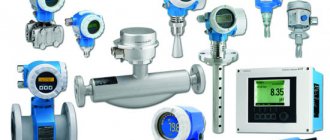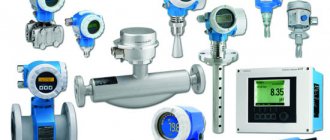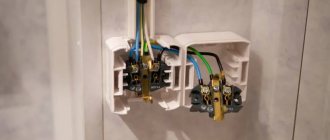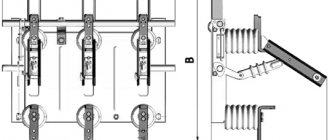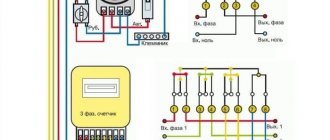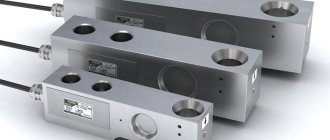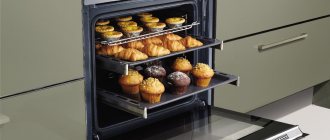The work of any modern enterprise conducting production activities is impossible without the use of certain instruments and sensors, collectively called instrumentation and automation. Ordinary citizens also need them, for example, to control the consumption of water, heat and electricity. And the maintenance of these devices is carried out by specially trained people.
General information
A lot depends on the functioning of control and measuring instruments and automatic equipment in production, including the timely release of goods, labor safety and the absence of emergency situations. Many people are interested in: what is an instrumentation mechanic? This is an employee who monitors the serviceability of such equipment at the enterprise.
Due to technological progress and constant changes in equipment, this employee is required to constantly develop and improve his skills. Sometimes he is required to be inventive and rationalize the use of technology. The positive qualities of this specialization are a constant income, the significance of the work for society, as well as the great demand for such specialists. Disadvantages most often include the need for constant development of new technologies, the risk of emergency situations and increased responsibility.
What is instrumentation and automation?
This definition includes all control equipment and automation used in practically various production areas and in everyday life. Examples include electricity and water meters, pressure regulators in the oil and gas industry, automation for boiler houses, etc.
Decoding the abbreviation
The abbreviation of this term stands quite simply - instrumentation and automation. The service of the same name performs the following tasks and functions:
- implementation of metrological supervision;
- maintenance, adjustment and repair of measuring equipment;
- implementation of new automation systems at the enterprise, for example, automated control systems.
In some cases, foremen and adjusters from the “Instrumentation and Control” department may be involved in the commissioning of electrical equipment, if there is a production need.
Types of instrumentation and automation
The classification of measuring equipment is made depending on the physical and technical characteristics of the devices, as well as their qualitative and quantitative indicators. By the name of the group it is easy to determine the purpose of the measuring devices included in it:
- instruments for measuring temperature - thermometers (A in Fig. 2);
- devices for determining pressure - pressure gauges (B);
- flow meters of the working medium or other substances - flow meters (C);
- determinants of the composition of gas mixtures - gas analyzers (D);
- tank fill level sensors – level gauges (E), etc.
Figure 2. Different types of measuring instruments
Each of the groups, in turn, is divided into several subgroups, according to their design and operating principle. For example, pressure gauges, among them there are devices for measuring excess pressure, its difference, or displaying the absolute value. The design of these devices can be electrical or mechanical.
Electric contact pressure gauge
What types of instrument errors are there?
4.1. Absolute error
Absolute error is the difference in readings between the measured value and the certified value. The absolute error is determined in the units in which the instrument readings are displayed. For example, for temperature transmitters this is degrees Celsius (Kelvin). The absolute error of an instrument may vary from one instrument to another. For example, in the range of 0-300 degrees there is one value. In the range of 300-1000 degrees there is a different value. An example of calculating the absolute error. At a set temperature of 200 degrees Celsius, the device shows 201 degrees Celsius. The difference between the true value and the measured value is 1 degree. This is an absolute error.
4.2. Relative error
Relative error - measured in %. To determine the relative error, it is necessary to determine the absolute error of the device. Then divide the resulting error by the number corresponding to the specified value of the medium being measured. The resulting value is multiplied by 100. The relative error is usually calculated for flow converters. For example, in a special testing device we set the flow rate to 200 cubic meters per hour. The device readings are 201 m3/h. The absolute error will be 1 m3/h. We divide the resulting value of 1 by the flow rate we set to 200. We get the number 0.005. All that remains is to multiply this value by 100%. We get the number 0.5%. This will be the relative error.
4.3. Reduced error
The given error is measured in the same way as the relative error in percent. In this case, this is the error of the device relative to the measurement scale. To calculate the reduced error, we first also determine the absolute error. Then we multiply the resulting value by the measurement limit. And to get % we multiply by 100. The given error is usually indicated for pressure gauges. Let's look at an example. The pressure gauge input has a measuring range of 0-200 kPa, and a testing device supplies 100 kPa. The reading on the pressure gauge corresponds to 102 kPa. The absolute error will be 2 kPa. Dividing 2 kPa by 200 kPa, we get a value of 0.01. Multiplying this value by 100% we get the reduced error of 1%.
4.4. Main error.
Main error. All three of these errors relate to the main error. Determination of relative, reduced and absolute errors is carried out in laboratory conditions, under environmental conditions that meet the requirements of the verification methodology.
4.5. Other types of errors.
Other types of errors. In addition to the main error in measurements, there are many more errors. I will not describe all types of errors. I’ll just list as an example what other types they are. This is additional, systematic, random, statistical, dynamic, instrumental, etc.
A measuring instrument whose characteristics during verification do not exceed the permissible values is considered suitable for further use. For measuring instruments whose error exceeds the permissible values, the primary or secondary converter is adjusted. The setting can be done either through software (by changing the coefficients) or mechanically. For example, by rotating variable potentiometers, changing the position of jumpers, or grinding the diaphragm. Sometimes, of course, we may not even suspect that at the moment some coefficients are changing. For example, when supplying test gas to a portable gas analyzer. The gas analyzer itself changes its settings programmatically. After automatic setup, the gas analyzer gives us a signal that the setup is complete and the date of the next verification.
Instrumentation and instrumentation - decoding and differences
The main purpose of instrumentation and automation, consisting of special measuring devices and automation, is to determine precise physical quantities. The devices allow you to see the current water consumption and determine the efficiency of specific equipment.
Explanation of the abbreviation KIP: control and measuring instruments. They measure certain parameters of the product, technological process or some conditions.
As for instrumentation and automation, the decoding of the abbreviation is similar, only supplemented with the word “Automation”.
Automation of production has led to the creation of new things in instrumentation. This especially affected automated production rather than automated production. The difference between these two terms is that the latter is carried out with human participation, and automatic - without it. Car factories are equipped with entire conveyor lines, where all assembly is performed by robots. There are factories equipped with fully automatic sections, lines, workshops - and this is no longer uncommon.
Moreover, some groups of goods cannot be produced in any other way. For example, the production of integrated circuits involves a completely automatic process, since a person is not able to help in this matter - the product being produced cannot be seen without a microscope.
A person’s task in this scheme is to periodically measure certain parameters, so one letter “A” was added to the abbreviation KIP, not counting the connecting conjunction “and”.
Factories of companies specializing in the production of high-tech equipment are equipped with “KIP Automation” services, which ensure the uninterrupted operation of all devices. After all, the slightest malfunction in the service is fraught with the shutdown of all production and subsequent huge losses.
5.2.2.3. Active analog signal 4-20 mA
When designing, it is not always possible to determine which device will be purchased. Many devices require an additional power connection. Sensors with additional power supply can themselves supply voltage to the connection circuit. Such sensors are called “active current output 4-20mA”. The connection diagram for such a device is shown below.
Connection diagram for a flow meter with active current output
On the diagram I did not indicate the type of power source used. The device can be supplied with either 24V DC or 220V AC voltage. In this case, power is supplied to the measuring module of the analog input of the controller from the device. To connect the device to the controller in this case, it is necessary to use an analog controller module with a passive input.
How to determine the type of 4-20mA analogue output signal on the device? The only way is to measure the voltage by first disconnecting one of the wires from the terminal. By checking the voltage on both sides, you can determine the type of sensor
Why is it impossible to determine the type of sensor signal by the presence of some inscriptions on the “nameplate” of the device, or by the electrical connection diagram? Simply because the same device can have both a passive output signal and an active output signal. The device can be configured using software or by changing the position of the jumpers in the device.
Devices with an active output signal are quite rare in practice. But they apply, and you must remember that.
There is also one type of current signal 4-20mA.
This type of signal is used when measuring flow. Typically, flow rate is measured by multiplying the cross-sectional area by the flow rate through that cross-section. Flow velocity is calculated using various methods. And the cross section is always calculated using the formula S= ∏r². This square in the cross-sectional area formula increases the volume of passing fluid in a quadratic relationship. For example: when the pressure drop changes by 2 times, the volume of liquid passing through a given section will increase by 4 times. When the pressure drop changes by 3 times, the volume of liquid passing through the diaphragm will increase 9 times.
To better understand the difference between current signals with a proportional output signal and a quadratic output signal, I will give an example in the form of drawings. The figures show sections of two types of tape from tape recorders.
Picture 1
In Figure 1 we see that the tape is divided into uniform sections. These lines represent the instrument's scale from 0 to 100%, in 20% increments. The type of this tape is used to record, for example, pressure parameters.
Figure 2
In Figure 2, the scale on the tape is not evenly spaced. Up to 30% the accuracy of the scale is very small. Above 30%, the measurement accuracy increases. This tape is used to record flow parameters.
The current in the pressure sensor and flow sensor circuits will change similarly.
When measuring different parameters, the same device can be used. Let's look at the example of these same two segments of chart strips.
For example, a differential pressure transmitter can be used to measure the differential pressure across a meter line filter.
The same differential pressure transmitter can be used to measure the differential pressure across the diaphragm when measuring flow.
In both cases, the sensor output will be 4-20 mA. But the dependence of the measured parameter on the current value is different.
Let's look again at the example of chart strips.
On the chart strips we see that with the same current of 12 mA there will be different values of pressure drop and fluid flow.
How is the secondary device or controller supposed to “understand” what value it should display?
There is a “root extraction” function for this. This function is enabled in the settings of the measuring channel on the secondary device. When outputting to the controller, a “root extraction” module is added to the channel logic. The actual flow rates will be displayed on the screen.
The “root extraction” function may also be in the settings of flow meters. The operating instructions usually describe everything in detail.
Important. When replacing the diaphragm with a flow meter with a 4-20 mA output, leave the “root extraction” function in only one place. Either on the flow meter or on a secondary device.
Classification of instrumentation
Basically, instrumentation equipment is classified according to physical and technical characteristics and qualitative and quantitative indicators. The names of the groups indicate the purpose of the measuring instruments related to them:
- Thermometers can be used to measure temperature. They are: liquid, digital, with resistance conversion, thermoelectric. This group also includes pyrometers and thermal imagers.
- Pressure gauges are responsible for determining pressure: its excess, differential or absolute value. They can be mechanical or electrical contact.
- Flow meters will help measure the flow of the working medium or other substances. This group contains various devices, each of which is focused on controlling and changing a specific material (environment).
- The main function of gas analyzers is to determine the composition of gas mixtures.
- Using level gauges, the filling level of containers is determined.
Devices are designed to measure certain physical properties. Based on these characteristics, they are classified as follows:
- Physical properties (temperature and flame) are monitored by thermometers, thermocouples, temperature sensors and flame monitoring.
- Liquid and gaseous media (pressure, liquid level and flow rate) are measured with pressure gauges, pressure gauges, level gauges, and flow meters.
- Electricity indicators are determined using voltmeters, ammeters, meters, transformer voltmeters, bridges, magazines, ohmmeters and high-frequency meters.
- Analyzers and gas analyzers are chemical meters.
- Radiation levels are monitored using Geiger counters, dosimeters and detectors.
- When monitoring executive automation devices, you cannot do without electric igniters, manipulators and servomotors.
It will be interesting➡ Stray currents and ways to deal with them
Measuring instruments in household appliances
When studying the diagram of any device used in home life (from a washing machine to an iron), you will notice that they are all equipped with devices that measure and control certain parameters:
- hot water - they can be found on boilers or radiators;
- air - relevant for air conditioners and convectors;
- electricity (voltage and current) - similar ones are installed on irons, multicookers, oil heating radiators, etc.
The basis of modern automated systems are microcontroller circuits. In the process of technology development, they replaced control units equipped with circuits with low integration.
Thanks to this, today it is possible to achieve automation of any process, any installation, and even the smallest device.
Service staff
The correct operation of any of the automated systems must be monitored by a person of a certain profession, namely: an instrumentation mechanic. He repairs, configures devices and components involved in the system, and also carries out their maintenance. The job descriptions describe in detail who a Kipovets is and what he does. The specialist’s functions include servicing not only the control devices themselves, but also other auxiliary components of the system: valves, tachogenerators, gearboxes, cylinders.
Only Kipovtsy are not enough for the work; a whole department, located in a separate room, is responsible for the maintenance and monitoring of devices, the functions of which include:
- proper organization of the work process;
- ordering spare parts;
- project development;
- planning and scheduling, etc.
The structure of the department also includes management specialists: for example, the workshop foreman, who reports to the head of the workshop, is subordinate to an instrumentation mechanic. The entire automation division is under the control of the chief metrologist and his deputy.
The workshop has in its structure a metrological laboratory with KIP electronics engineers, electricians, operators, adjusters and other highly specialized specialists. They repair, check and verify instruments and measuring instruments.
The key place in this structure belongs to the instrumentation and automation engineer, who is obliged to:
- Design and use ACS (automated control systems).
- Collect and process information necessary for drawing up projects.
- Determine tasks for all departments of the workshop and explain the necessary details according to job descriptions.
- Create all programs that determine the operation of the automated control system in accordance with the necessary requirements.
- Prepare the necessary documentation: manuals, instructions, etc.
Automation elements
In automated process control systems (APCS), various actuators are used to control the technological process.
Actuators are an element of an automatic system that acts on a control object to perform some action. Typically, actuators consist of two parts - an actuator and a regulator. The main purpose of actuators is to convert any signal (electrical, mechanical, optical, pneumatic) into signals to influence control elements (turning on, off, switching operating modes of mechanisms, systems or devices).
The most common actuators are switching relays, drives of moving parts, rotary devices, manipulators, electromagnetic valves (solenoids), devices for opening or closing control and shut-off valves and flaps, turning on variators and switching gearboxes.
Job responsibilities and work characteristics
The main professional task of an instrumentation mechanic is to carry out control measures over the operation of special equipment and repair it. The employee is obliged to promptly identify defects in the operation of devices, regulate and adjust their activities.
Each instrumentation and automation specialist must be able to manufacture the parts necessary for the operation of measuring equipment. Ensure the availability of backup equipment for the efficient and uninterrupted operation of automatic devices.
The job responsibilities of a mechanic include training production personnel in the rules and regulations for the operation of devices and automation.
When applying for a job, applicants for the position of instrumentation mechanic are subject to the following requirements:
- know electrical engineering (TOE - parts 1,2,3);
- be able to read, draw, calculate simple electrical, electronic and circuit diagrams;
- find and correct faults in electrical equipment according to diagrams;
- have the skills to read special reference books on electrical engineering;
- organize and carry out installation and repair of electrical equipment, instrumentation and automation;
- know and follow the rules for the safe operation of electrical installations, instructions for the use of protective equipment;
- know the basics of electrical safety when operating equipment.
Prospects for the profession
In modern industry and many types of services, automatic systems perform most functions. The role of humans is increasingly reduced to installation, commissioning, monitoring of equipment and its repair. Therefore, the profession of an instrumentation mechanic will be relevant in the coming years, however, the requirements for the knowledge of employees will increase with the complexity of devices. With insufficient qualifications, a worker’s mistake can cost the enterprise large losses and long downtime.
Author: Alexey Kuznetsov
If you still have even the slightest doubt that the profession of a switchgear mechanic is right for you, then we strongly recommend taking a career guidance test from Profgid . It costs mere pennies, and at the same time allows you to avoid mistakes that can go in the wrong direction and cripple your entire life. Find out more >>
Responsibilities of an instrumentation mechanic
An instrumentation and equipment mechanic (I&C) is a specialist whose main task is to monitor the uninterrupted operation of various pressure gauges, tachometers, level gauges, and measuring sensors. The specialist ensures that the readings coming from all devices are accurate and timely.
The list of his responsibilities can also include the following:
- a full range of interaction with equipment - repair, adjustment, serviceability check, testing;
- Troubleshooting;
- reading drawings;
- processing of data received from devices;
- drawing up reports.
Nowadays there is a lot of control and measuring equipment. Many of them are stuffed with electronics. So an instrumentation mechanic needs to continuously educate himself and delve into the design of new products.
Moreover, his work requires not only deep knowledge of measuring instruments, but also high general erudition, because an instrumentation mechanic often requires non-trivial approaches to equipment repair. It is also worth noting that in this specialty, unlike many others in this category, the number of female specialists is not inferior.
In this regard, a mechanic in instrumentation and automation must have the following knowledge:
- structure of devices, features of their technological processes;
- device block systems;
- characteristics and features of various materials used in instrument making;
- accepted quality standards for instruments;
- physics;
- mechanics, including the basics of telemechanics;
- electrical engineering;
- radio engineering;
- electronics.
To be allowed to work independently, a specialist must provide a certificate of absence of medical contraindications and undergo special training at the enterprise. Of course, the instrumentation mechanic must be an adult.
Before starting work, an instrumentation mechanic must confirm knowledge of safety precautions, labor protection, and also prove compliance with the category. In production, such exams are held regularly.
It will be interesting➡ Useful power
As part of his job, an instrumentation mechanic will have to work both indoors and outdoors. The employer must provide such employees with weather-appropriate uniforms.
A mechanic on instrumentation and automation can work either individually or as part of a team. This point depends on how the work process is structured and what the specifics of the enterprise are.
Responsibilities at work
An instrumentation mechanic performs the duties specified in his job description, the content of which depends on the specifics of the enterprise, the category and experience of the foreman. The functions of workers are radically different at an aircraft factory and in the housing and communal services sector, but in any case the main tasks include:
- assembly, testing, adjustment, detection of defects and repair of various instruments (counting, electrodynamic, heat measuring, optical-mechanical, etc.);
- fitting and finishing of parts using metalworking;
- drawing up connecting diagrams and their installation;
- various types of soldering (copper, silver and other solders);
- determination of the hardness of a metal product using a calibrated file;
- heat treatment of parts for their subsequent finishing;
- setting the error during testing of the device (relative and absolute);
- coloring of devices;
- preparation of certificates and passports for equipment, preparation of defective statements.
All instrumentation mechanics have qualification ranks from 2 to 8; a graduate of a college or training center is most often assigned the second. In order to be awarded it, you will have to undergo an internship at a workplace at the enterprise, undergo critical duplication and testing, and sometimes the candidate may be given emergency training. An instrumentation mechanic of the second category is required to be able to adjust and repair simple instruments (electromagnetic, heat measuring and magnetoelectric), perform metalworking of individual parts and install simple devices. Most often, a more experienced master looks after a newcomer.
Professionals of 7–8 categories understand microprocessor technology, can independently build a control system, and know electronic computers and telemechanics. They are able to find problems in unique multi-component systems and eliminate them using existing or self-developed corrective and testing programs.
An instrumentation mechanic receives the following ranks in order:
- a certain period of work in the position;
- completing a refresher course in the main specialty, safety precautions, rules for operating electrical installations and working with tools, production instructions;
- passing certification exams.
The results are recorded in knowledge testing protocols and qualification certificates. Employees of enterprises are interested in improving their knowledge, since a higher level “crust” will allow them to perform complex work and receive a decent salary.
In general, the employer expects from the candidate the following knowledge and skills:
- knowledge of the basics of basic natural sciences (physics, mathematics, chemistry) and applied subjects (drawing, materials science);
- understanding of the structure and operating principle of the equipment being serviced, as well as the production processes provided by these devices;
- ability to read technical documentation, diagrams and drawings of varying complexity;
- mastery of basic tools (soldering iron, file, pliers) and their use in practical activities;
- knowledge of fits and tolerances, properties of conductive and insulating materials;
- the ability to measure resistance in various parts of the circuit;
- strict adherence to instructions;
- compliance with safety requirements and labor protection.
Activity
What is it - an instrumentation mechanic? This is an instrumentation and automation repairman; he is a universal specialist engaged in the repair, maintenance and operation of systems and devices. Among the main tasks of this employee, it is worth highlighting repair and testing work, certification of devices and ensuring the uninterrupted operation of all equipment that is installed in switchboards, circuits and consoles. A desk with power sources is allocated as a workplace for this specialist, and it also includes consoles and panels with equipment installed on them.
The employee spends most of his working time monitoring the operation of automated equipment and measuring instruments. A mechanic must know not only how the equipment entrusted to him works, but also how the technological process at the enterprise works. It is because of this that the employee must constantly improve the level of his qualifications and receive higher ranks as an instrumentation mechanic.
Who is it suitable for?
The profession of an instrumentation mechanic may be of interest to men and women who have a technical mind and love to tinker with different devices. Persons who have reached the age of majority, have undergone special training and have no contraindications due to health conditions are allowed to work. People with problems of the musculoskeletal system, cardiovascular system, or impaired coordination of movements will not be able to pass the medical examination.
To work successfully, a Kipovite needs the following personal qualities:
- responsibility;
- organization and consistency;
- scrupulousness and accuracy;
- spatial imagination;
- physical endurance and mental stability;
- technical thinking;
- good memory and ability to concentrate;
- clear coordination of movements and developed fine motor skills of the hands.
If there is only one mechanic at the enterprise, then he needs to be able to properly plan his schedule and distribute tasks throughout the day. At large factories, special teams are engaged in servicing equipment, so you need to be able to work as part of a team.
The advantages of the profession are relatively good working conditions, respect in the team. Disadvantages - high level of responsibility, the need to meet the ever-increasing requirements of complex technology.
Training for instrumentation mechanics
Due to their broad qualifications, instrument repair specialists are required to receive specialized secondary vocational education.
Instrumentation and automation mechanics are trained in secondary specialized educational institutions with a technical focus. On average, the duration of training takes about two years.
Of course, in some cases it is possible to obtain a position as an instrumentation mechanic with a different technical education. But with this option, you will still need to take professional retraining courses. You can do this yourself before starting work at the enterprise, or you can receive a referral for additional training from your employer.
Special courses are also held for instrumentation mechanics, within which they can improve their knowledge and become familiar with new work methods.
The best colleges and courses for study
You can master the profession of an instrumentation mechanic in most technical colleges, for example in the following colleges:
- College of Modern Technologies named after. M. F. Panova (Moscow). Here they train service technicians and mechanics, taking into account the needs of the economy of the capital and the Moscow region. Employment is possible in JSC Metrostroy, State Unitary Enterprise Mosgortrans, LLC ISB-Engineering and other companies. The duration of the course after 11th grade is 10 months, after 9th grade – 2 years 10 months.
- Omsk Industrial and Economic College is one of the leading educational institutions in the region that trains skilled workers. Ssuz maintains contacts with potential employers throughout the country, for example, Yamalkommunenergo, Omskvodokanal, Electrical Installation Management No. 7 LLC (Krasnodar).
- The Krasnoyarsk College of Welding Technologies and Energy has a good material and technical base that allows it to keep up with the times, meeting all the demands of the modern economy. An instrumentation mechanic leaving the walls of a college will not be left without work.
- Samara College of Aviation and Industrial Engineering named after. D.I. Kozlova trains specialists in automated control systems for high-tech enterprises not only in the region, but throughout the country. The duration of training based on 9 classes is 3 years 10 months.
- South Ural State College (Chelyabinsk) trains specialists in the installation, maintenance and operation of automated control systems (automatic control systems) and electronic equipment. Here they give you skills in working with specialized programs. Ssuz cooperates with the Financial University under the Government of the Russian Federation and the South Ural State Humanitarian and Pedagogical University.
Also, the profession of an instrumentation mechanic can be obtained at training centers that train workers. A few examples:
- The Professional Training Center (CPTC, Tyumen) trains specialists of 2–6 categories remotely without interrupting work. Based on the results of the training, he sends a certificate, a state-issued ID and an extract from the minutes of the meeting of the qualification commission. CPPC cooperates with Lukoil, Sberbank, Gazprom Burenie, BenTec.
- The Training and Certification Center (TsPiA, Moscow) conducts both initial training of workers and advanced training. Classes are held in person on weekdays. Practicing specialists in metrology and automation teach at the Center for Accreditation and Automation. Partners, Shcherbinsky elevator building and other enterprises.
The duration of training depends on the program (basic, advanced) and the form of classes. The price is determined based on the number of listeners.
Qualification of mechanics for repair and maintenance of instrumentation and automation devices
Mechanics for the repair and maintenance of instrumentation and automation can have categories from the second to the sixth. Depending on the assigned category, instrumentation mechanics may have a different list of responsibilities and perform work of varying complexity. A 2nd category instrumentation mechanic works with the simplest instruments, carries out diagnostics, adjustments and repairs.
An instrumentation mechanic of the 3rd category carries out the necessary range of work with devices of medium complexity. For example, electrodynamic devices.
An instrumentation mechanic of the 4th category works with devices of average complexity, but, in addition, adjusts parts and draws up diagrams of complex connections.
An instrumentation mechanic of the 5th category works with devices of average complexity, but, in addition, adjusts parts and draws up diagrams of complex connections, and is engaged in servicing devices that have automatic control settings.
An instrumentation mechanic of the 6th category is engaged in servicing devices that have installations for automatic control, works with experienced and unique equipment, conducts inspections for the presence of defects and eliminates them. Instrumentation mechanic of the 7th category Has the necessary knowledge to work with microprocessor-based equipment. Instrumentation and automation mechanic of the 8th category Already works with prototypes of equipment based on microprocessors.
An instrumentation and automation mechanic is a universal specialist who has many responsibilities and performs maintenance, repair and operation of various instrumentation equipment and automatic control systems. At enterprises, the main tasks and responsibilities of the instrumentation and automation repair department are the repair of instrumentation and automation equipment, their periodic verification, certification and submission of devices in a timely manner to state verification authorities, as well as ensuring uninterrupted, trouble-free operation of all elements installed in switchboards, consoles and individual circuits. Mostly, an instrumentation mechanic works in factories, in production, in organizations that use instrumentation and automatic control systems in their work and performs duties for the repair and maintenance of all types of measuring equipment and automation devices. The responsibilities of an instrumentation and automation mechanic also include servicing modern automation systems.
Description of the profession
An instrumentation mechanic is noticeably different from his colleagues who work in other production areas (repairmen, mechanical assemblers) in that the work he performs is “cleaner” and more varied. He can repair small mechanisms using miniature screwdrivers, as well as fairly large measuring units using a pipe wrench, chisel and hammer. But in general, a metalworker is considered a “white collar” worker among workers.
The concept of instrumentation and automation includes a wide variety of automation and control equipment that can be used in production and in domestic conditions:
- thermometers; • pressure gauges (in boilers, pipelines);
- flow meters, for example water and electricity meters;
- level gauges showing the degree of filling of the container with liquid or bulk products;
- gas analyzers indicating the composition of gas mixtures, etc.
Each group of devices has variations depending on the principle of their operation and design. In production, devices can be used to manufacture products or to monitor their compliance with specifications or GOSTs. All this equipment must be constantly subject to metrological supervision, adjustment, maintenance and repair. It is the maintenance of all automatic systems in working order that is the responsibility of an instrumentation mechanic.
As a rule, such a master is allocated a special well-lit electrical installation table with connected current sources (both alternating and direct), on which repairs and testing of the device are carried out. The working tools include a soldering station (or soldering iron). Serious companies have metalworking tools, a workbench, a lathe and a computer for storing technical documentation and carrying out the necessary calculations.
About the 8th category in the profession
A specialist with the eighth category is considered the most important and experienced specialist in production. Naturally, this kind of employee is endowed with especially complex functions. What does the professional standard establish in this case?
An instrumentation fitter with the latest level of qualification, in addition to managerial responsibilities, must also:
- draw up and maintain programs for microprocessor controllers, regulators and other devices;
- select the necessary characteristics that would meet the efficient, but at the same time economical and optimal operation of the equipment;
- check, test and commission level gauges, recorders, vibration meters, devices with intelligent pressure sensors, paperless recorders, computer-based devices, etc.
A specialist may have many other functions, but everything here will depend on the orders of his superiors and his place of work.
It will be interesting➡ Balast for fluorescent lamps
5.1. Pneumatic signals of measuring instruments with an output signal of 0.2-1.0 kg/cm2.
Modern technologies require the most accurate measurements of process parameters. The greater the accuracy of the instruments during measurements, the higher the quality of the products and the fewer losses in commercial calculations. Therefore, in the modern world, measuring instruments with a pneumatic signal are used less and less. But they are still produced and used. For example. Difference pressure transducers DMPK-100.
There is no photo, but you can see its characteristics on the manufacturer's website. Output signal 0.2-1.0 kg/cm2. This is the output pneumatic signal. The limit of the given error is 0.5-1%. These devices are large in size and heavy, and are inconvenient to maintain. But in some industries they are still used.
What does an instrumentation engineer do?
This profession has the following responsibilities:
- organizational work related to ensuring uninterrupted operation of equipment;
- responsibility for the implementation of automated equipment;
- management of instrumentation and automation services, in particular, coordination of teams of specialists;
- metrological support;
- preparation of technical documentation (technological map, maintenance schedules, verification, calibration);
Example of a technological map
- long-term planning (action plan for a month, quarter, year);
- acceptance of completed work;
- drawing up instructions in accordance with identified deficiencies and comments;
- organizing control over the implementation of assigned tasks.
Responsibilities of an instrumentation and control engineer
Instrumentation and Control Engineer is a specialist of the department, must have a higher technical education and experience in engineering positions. In some cases, it is necessary to undergo industrial safety certification in Rostechnadzor for the operation of installations.
The instrumentation and control engineer must know the following:
- design and principle of operation of devices, components, automation equipment and enterprise equipment;
- diagram, designs, technical characteristics and necessary indicators for the operation of the serviced equipment and units;
- techniques and methods for inspecting equipment, taking readings, measuring parameters and performing the necessary calculations;
- methods of collecting and analyzing information, making technical and technological decisions.
The responsibilities of the Instrumentation and Control Department Engineer include the following:
- management and coordination of instrumentation and control services;
- organizing the work of the department to ensure trouble-free operation of equipment;
- implementation of automated processes;
- ensuring metrological control of enterprise measuring instruments;
- development of technical documentation (device verification schedules, technological maps, schedules and volumes of maintenance work, etc.);
- development and monitoring of the implementation of department work plans for a month, for a quarter.
The performance of not only the equipment itself, but also the entire enterprise largely depends on the coordinated and competent work of instrumentation and automation specialists.
Who is an instrumentation engineer?
Almost any enterprise has many different instruments, sensors, meters and other technical devices. All such equipment must be monitored by someone. An instrumentation engineer is the very specialist who is able to monitor the safe and efficient operation of all devices available in production. Thus, a professional is obliged to periodically inspect the equipment and ensure its high-quality repair or replacement.
It’s worth noting right away that the profession in question is not so simple. After all, a competent specialist must have a fairly wide range of knowledge, skills and abilities. Without all this, you will not be able to carry out your work functions efficiently.
What should an instrumentation and automation engineer know?
The profession has as many as seven categories, and therefore the knowledge of specialists with different qualifications can differ significantly. However, it is worth highlighting the most basic points that are enshrined in the employee’s special job description. Here are some of them:
- fundamentals of technological methods of metalwork production;
- device of the working tool and its purpose;
- techniques, methods and means of working with springs in a hot or cold state;
- methods of performing plumbing work;
- basics of electrical installation work;
- basics of connecting wires;
- properties of materials for tinning;
- basic safety precautions, methods and means of protection during work.
And much more. It is also worth citing the basic practical skills that an employee must have. Among them:
- performing metalworking;
- competent use of tools;
- high-quality soldering;
- elimination of defects, etc.
Thus, a mechanic in instrumentation and automation must have a fairly large stock of knowledge and skills. Moreover, this employee must constantly develop his knowledge and skills. After all, progress does not stand still, and working equipment is constantly being improved.
Rights of an instrumentation and control equipment operator
The specialist in question, like any other officially working person, has a certain range of rights. What are these rights? How and when can they be implemented? The instrumentation and automation engineer, according to a special job description, has the right:
- constantly improve your skills and professional skills;
- demand from management the documents or tools necessary for work;
- arrange all necessary benefits or social guarantees;
- receive wages in full on time;
- propose to superiors various kinds of ideas or plans for improving the organization.
Above, only the most basic rights that the specialist in question has were mentioned.
